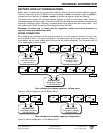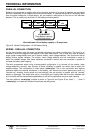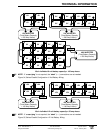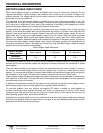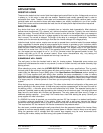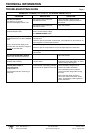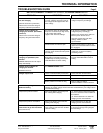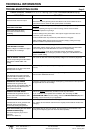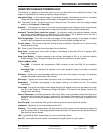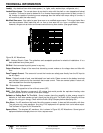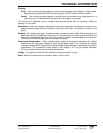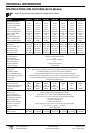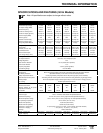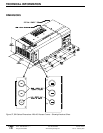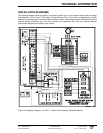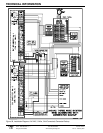
TECHNICAL INFORMATION
2001 Xantrex Technology, Inc.
5916 - 195th Street N. E.
Arlington, WA 98223
Telephone: 360/435-8826
Fax: 360/435-2229
www.traceengineering.com
SW Series Inverter/Charger
Part No. 2031-5
Rev. C: February 2001
Page
115
INVERTER/CHARGER TERMINOLOGY
The following is a glossary of terms with which you may not be familiar while reading this manual. They
appear in the description of inverter and battery charger operation.
Absorption Stage - In this second stage of three-stage charging, the batteries are held at a constant
voltage (the bulk voltage setting) and the battery is charged to its maximum capacity.
AC - Alternating Current. Electrical current that varies with time. The rate at which the voltage changes
polarity is the frequency in Hertz (Hz).
Ampacity – The ampacity of a wire is its current carrying capacity with reference to the cross-sectional
area of the conductors, the temperature rating of the insulation and the ambient temperature.
Automatic Transfer Relay (inside the inverter) - An automatic switch that switches between inverter
and charger mode depending on availability of AC input power. If AC is present, the unit will be a
battery charger; when AC goes away, the unit becomes an inverter.
Bulk Charge Stage - This is the first of the three stages in three stage charging. In this stage, a constant
current is fed to the batteries and as they accept the current the battery voltage will rise.
Current (Amps) - The volume of electricity flowing through a conductor. Equivalent to a volume of water
flowing through a hose.
DC - Direct Current. Electrical current that does not vary with time.
Deep Cycle - A deep cycle occurs when a battery is discharged to less than 20% of its capacity (80%
depth-of-discharge).
Deep Cycle Battery - A battery designed to be routinely discharged to 20% of its maximum capacity
without damage. This is the type of battery most commonly used with an inverter system.
Digital VoltMeter (DVM):
True RMS - A voltmeter that incorporates a RMS converter to read true RMS for any waveform
shape.
Averaging Type - A voltmeter that requires a sine wave waveform shape to provide an accurate
reading.
Efficiency - Usually given as a percentage, efficiency is the ratio of the output to the input. The efficiency
changes with power output levels of any inverter.
Electrolyte - Typically a mixture of water and sulfuric acid, it is commonly referred to as battery acid.
Equalization - Controlled “overcharging” of the battery causing it to bubble and mix. This reduces
stratification.
Float stage - During the third stage of three stage charging, the voltage and current are reduced to a level
that will trickle charge or maintenance charge the battery. This assures the battery remains fully
charged even while sitting.
Fuse or Disconnect- An electrical pressure relief valve. When current exceeds a preset limit the fuse or
disconnect will fail before the wiring or equipment it is protecting. Disconnects are also called circuit
breakers. These are usually resettable and can act as a switch to turn off power to equipment for
servicing.
Grid (The grid) - Also called the utility grid, this refers to the public power distribution system.
Impedance - Opposition to flow of alternating current (AC)
Islanding - The condition present when the utility power grid fails and the inverter attempts to power the
grid. An inverter which is “islanding protected” senses the loss of AC power from the grid and does not
back feed into the grid system.
LED - Light Emitting Diode. A light made up of semi-conducting material.
Line Tie - Term used when the inverter is connected to the public power or “grid” system.



